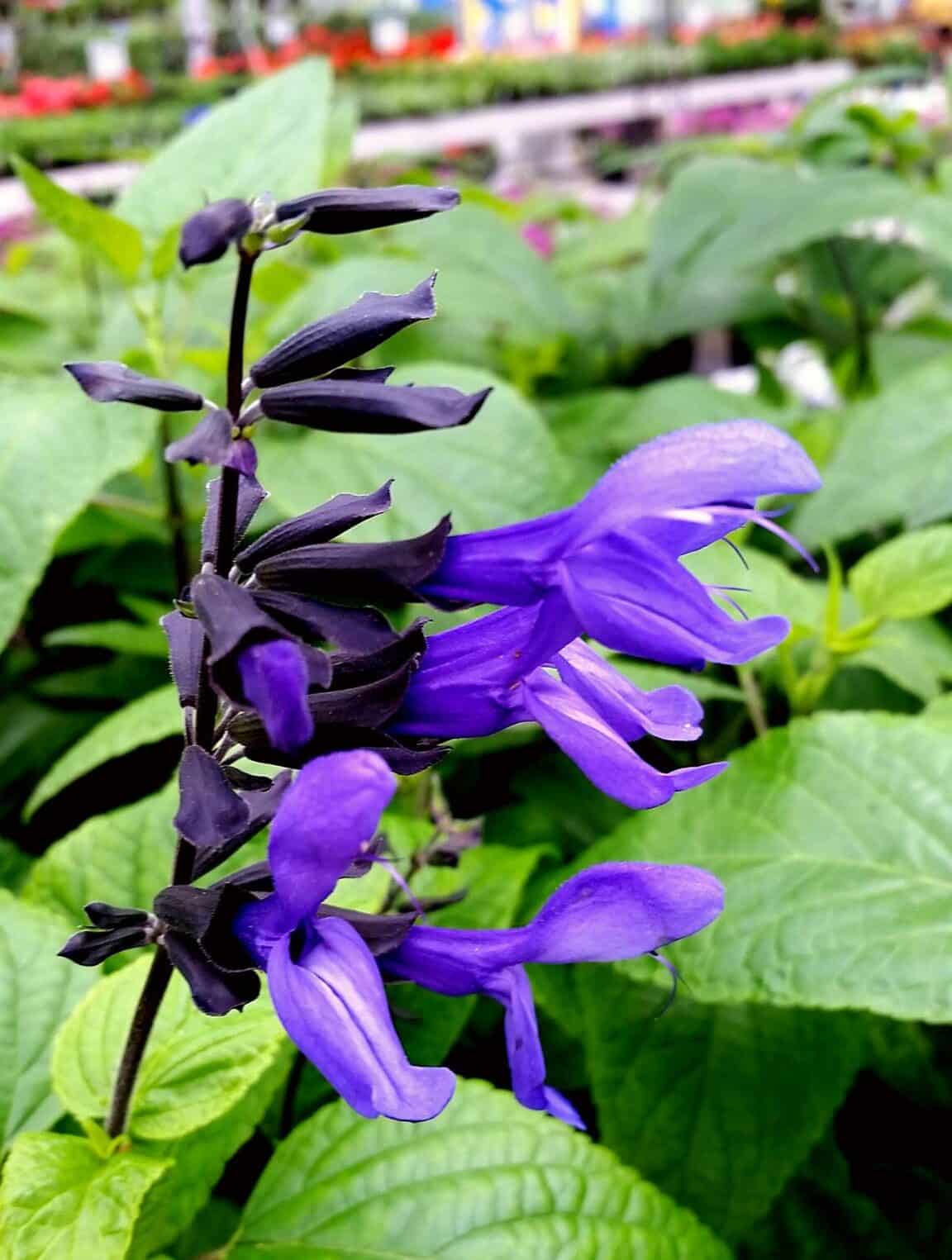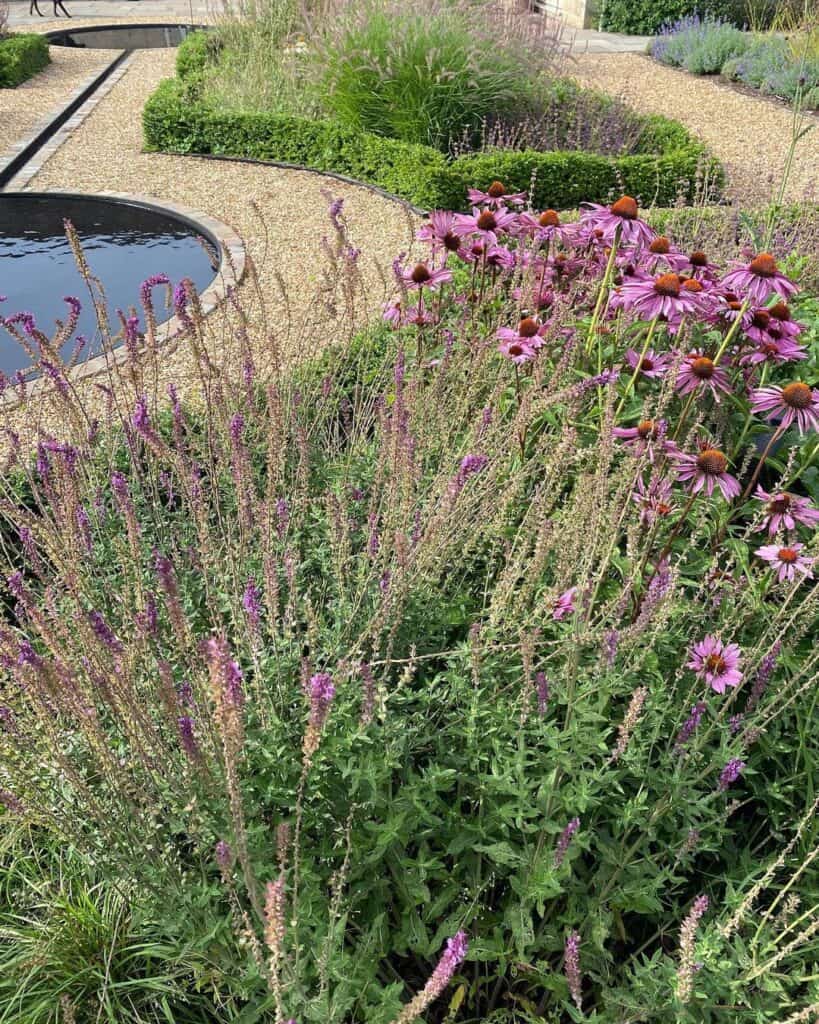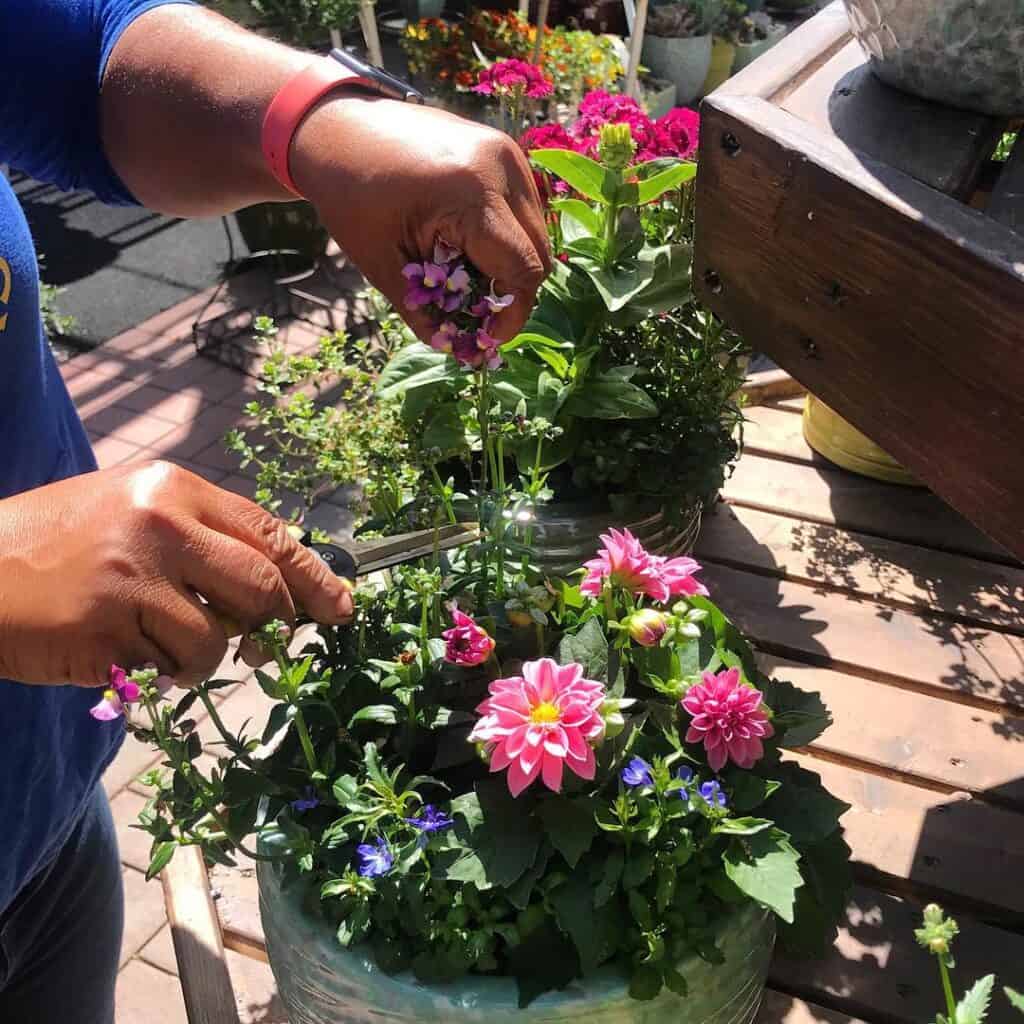Although deadhead sounds like something dark, it is not; instead, flowering plants like Salvias enjoy prompt deadheading and unfurl better blooms.
You can get better and more vigorous flowers after deadheading the blooms well past their lifespan.
But, the overall process can be tiring and will backfire even if a small step goes wrong.
Therefore, follow the instructions carefully and deadhead your Salvias.
Table of Contents Show
Should you Deadhead Salvias?
Salvia flowers bloom for a long time, starting in summer and ending the cycle in autumn.
With the long blooming time, they also come in different exquisite colors like red, blue, pink, white, lavender, dark purple, and an exotic shade of yellow.
Generally, you should deadhead Salvias if you do not want them to multiply uncontrollably and make them bloom up to four times a season.

Certain varieties of Salvias behave as both annuals or perennials, depending on the zone you live in.
As an invasive plant, deadheading plays an important role in the care of Salvias.
There are many benefits of deadheading Salvias. Let us take a look at a few benefits of deadheading Salvias.
- As these plants are invasive, deadheading them will ensure you do not have any unwanted growth on your lawn.
- Salvia can focus its energy on the new flower or foliage growth if you cut the spent blooms.
- Keeping the plant’s dead and spent blooms intact can blemish its looks.
- Deadheading Salvias will also increase the blooming to almost four times in that blooming season.
- Deadheading them during winter, when their blooms die off, will ensure they bloom with more prominent and vigorous flowers next year.
- It prevents the plant from seedling.
If you are a grower and not a shower, you can let the blooms be and collect the seeds after the flowers dry.
However, make sure you leave just a few blooms intact. Salvia is invasive; your garden will be filled with many of these plants swaying around.
When to Deadhead Salvias?
Salvias have long tubular flowers that contain two stamens and two anthers. The long stem contains many small flowers.
These plants bloom from late spring to early summer and can live up to 8 weeks. They show signs of stress at the end of their life cycle.
The flowers of Salvia will start to turn brown and fade, and the small clusters of flowers will begin to fall off. Take this as a sign to deadhead Salvias.

It will also exhibit the following signs to indicate that they require deadheading.
- The flowers will lose color, starting from the base and moving to the top.
- Flower spikes will turn brown and start to wilt.
- The small flowers will lose their holding and fall off.
- The flowers will start releasing seeds.
Pests and disease attacks on plants can also be a good reason to deadhead the flowers to protect other healthy flowers.
How to Deadhead Salvias?
Salvia flowers grow in long stalks that are easy to grab for deadheading. Just make sure you are donning the perfect gear.
These long stalks are not your regular flowers; hence, we advise you to take the required safety measures.
Materials Required to Deadhead Salvias
Prepare a list of the following items before getting your hands dirty.
Gardening masks, Isopropyl alcohol, Safety goggles, Pruning shears & Baskets are some materials you would require to deadhead Salvias.
Annual and perennial Salvias require similar equipment for the deadheading.
Let us move on with the deadheading process.
Steps to Deadhead Salvias
You might have a difficult time deadheading the Salvias in your garden.
Salvias planted in a flowerpot may not have spread as much as outdoors. So, you may have to work less while deadheading the Salvias indoors.
Pruning garden Salvias is hard, and you will have difficulty finding the main roots.

Black and blue salvia, an exotic variety of Salvia, can bloom for a long time without being cut back.
Let us jump on board to learn how to deadhead Salvias.
- The best times to deadhead the perennial Salvias are midsummer and before the frost starts.
- Inspect your Salvia for any dead, wilted, brown-tipped flowers.
- Before using your tools on the Salvia, ensure you have properly sterilized them with rubbing alcohol.
- Find the flower’s base, then cut off the stem where it is connected.
- As Salvia grows in a cluster of three, you can cut the central flower stem and let flowers grow on the other two if only the main stem is affected.
- You can also pinch the flower stem off if it is not sturdy.
You must be wary of the frost season and deadhead the plant before it arrives.
If you deadhead the flowers too early, the flowering period will be reduced significantly.
Moreover, Salvia struggles in the winter, so you would not want your precious plant to spend its energy on flowers when it could protect itself from the cold.
Also, you can keep the annual Salvias intact to collect their seeds for planting next spring.
Care Tips for Salvias After Deadheading
Deadheading Salvia has many benefits, and your plant will produce more beautiful flowers in the next flowering period.
However, there are other things you can do to take care of your Salvias.
Let us look at all the basic care tips you need to know after deadheading Salvias.

- When the winter hits, cut the plant leaving an inch or two behind, and properly mulch your Salvia.
- These plants flourish the best in 6-8 hours of full sun daily.
- Water your Salvia with an inch of distilled water every week.
- Salvias cannot survive if the temperature drops below 35°F. Therefore, ensure you bring it inside as soon as the temperature drops.
- Maintain humidity above 60% all the time.
- People tend to overwater and oversaturate this plant with light after deadheading. Avoid that, or you will send this plant to stress.
- Plant your Salvias in slightly acidic soil with a pH of 5.5-6.5.
- Salvias do not require fertilizer to grow, but you can use slow-release or organic fertilizers like compost to provide added nutrients.
- Certain diseases and pests can attack the plant, properly identify them and be on guard for them.
Salvias are lovely plants to grow in your garden or pots indoors.
You need to follow the above care routine, and mother nature will gift you beautiful Salvia with beautiful blooms.
From Editorial Team
You can choose from various Salvias, including May Night, Purple Rain, Caradonna, Snow Hill, Eveline, etc.
If you’re on a tight budget and can only afford one of these plants, get it; they’ll reseed themselves.
Also, remember to deadhead your plant for vigorous blooms.
Happy gardening!


